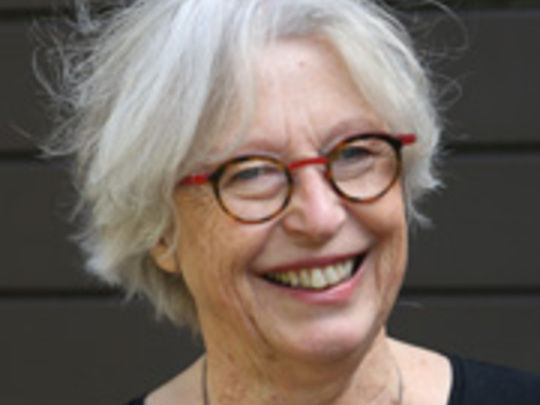
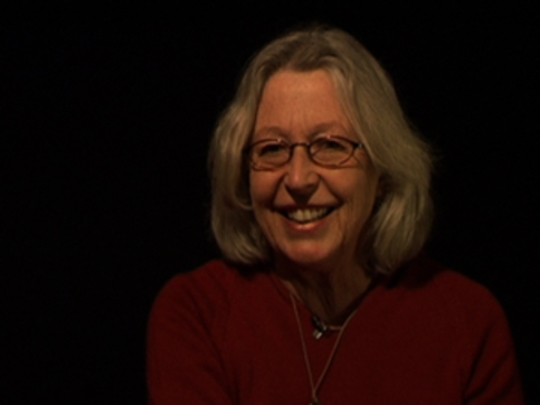
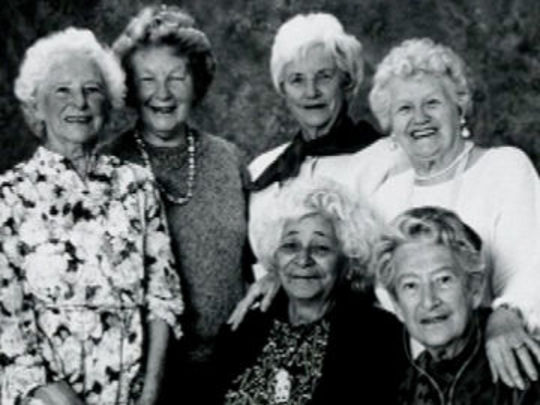
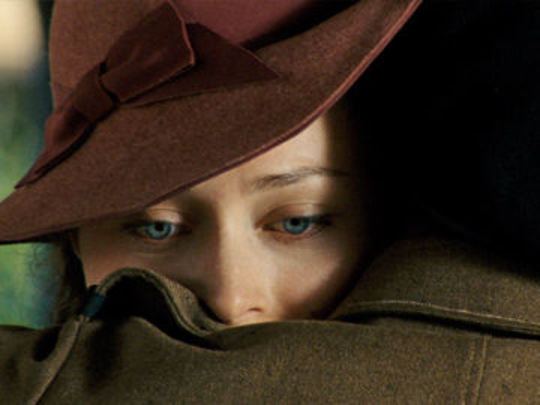
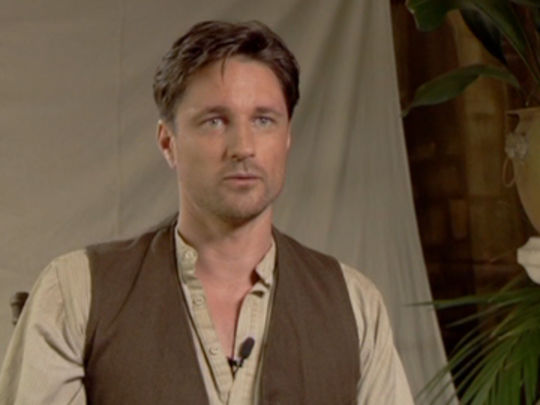
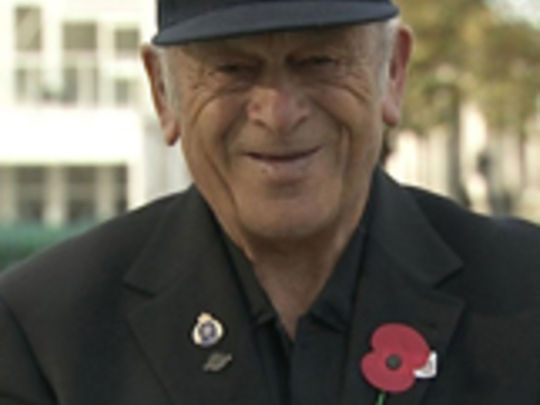
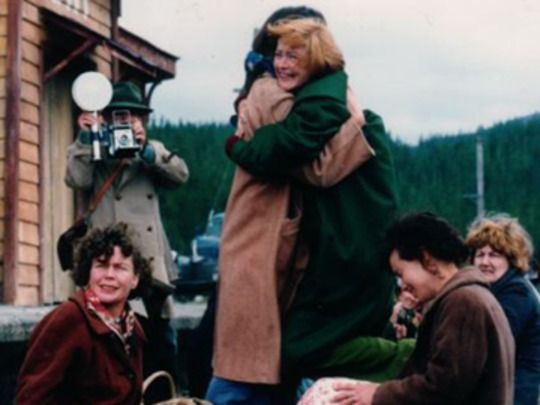
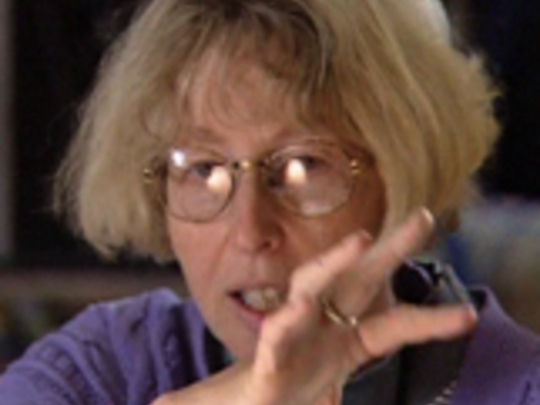
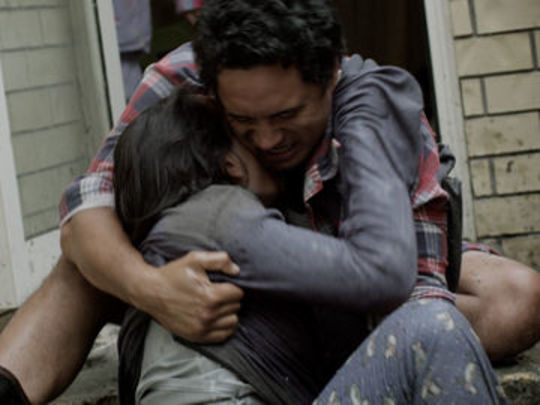
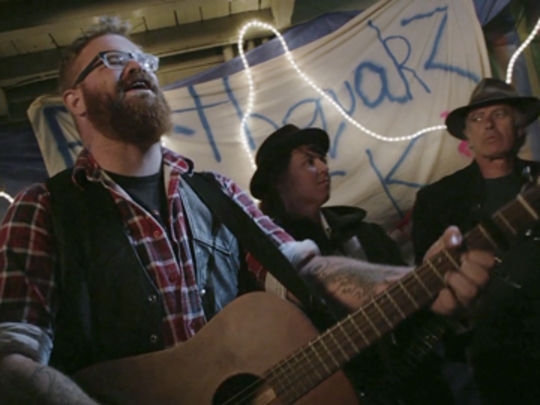
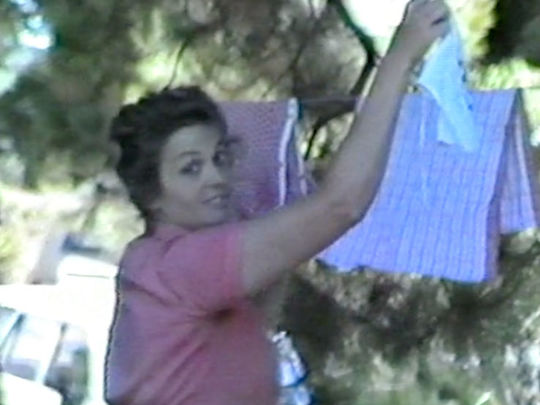
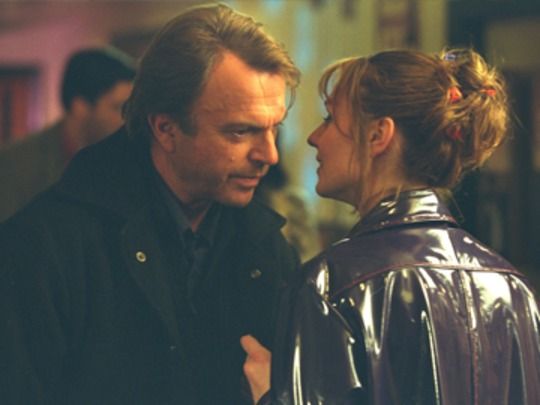
The Gaylene Preston Collection
The Gaylene Preston Collection
This collection has five backgrounds:
A National Treasure
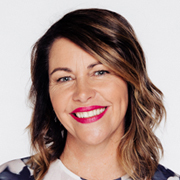
Working with Gaylene
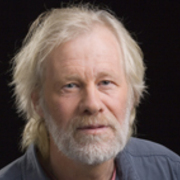
She Stomps Hard
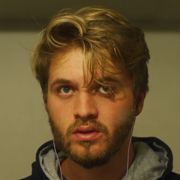
Making Hope and Wire
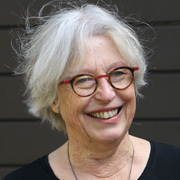
Hone Tuwhare

A National Treasure
By Kate Rodger 03 Nov 2022
I so vividly recall sitting quietly in my chair watching on as Newshub camerawoman extraordinaire, the late Cushla Lewis, set up her shot and attached lapel microphones to two of Aotearoa’s most accomplished wāhine. All three were nattering away with each other, the occasional chuckle punctuating their discussion. I was about to interview Gaylene Preston and Helen Clark about the film they’d just made together: My Year with Helen. Preston and her cameras had followed Clark as she attempted to become the first woman to head the United Nations. The mutual trust and respect between documentarian and subject was etched into every frame, as the pair secured rare access and insight into the inner workings and machinations of the UN General Assembly, as well as Clark’s personal life. The result was a fascinating watch.
Dame Gaylene Preston was the filmmaker to tell that story, as she has been of so many others over her incredible career. Making films in New Zealand has always been about collaboration, ingenuity, passion and generosity. Committed to making films through a female lens, Preston has always had her own stories to tell. But what makes her truly special is her gift for throwing everything she can into other New Zealand storytellers and their stories, willing them into being — using her mana and her drive to help craft and usher them into production and onto screens, amplifying their mahi, their talent and their potential.
My first personal encounter with Gaylene was for the release of her autobiographical feature Home by Christmas. Her earlier film War Stories Our Mothers Never Told Us (1995) had left me in tatters. Home by Christmas took a different window into wartime: through the eyes of her father Ed, inspired by countless hours of audio recordings she'd made with him. Casting her own daughter Chelsie as her mother, alongside Martin Henderson and Tony Barry as her father, Preston again showcased her flair for telling the stories of ordinary people, extraordinarily. The docudrama also highlighted longtime creative collaborations with the likes of world-class cinematographer Alun Bollinger, a relationship forged at the filmic frontline, its richness rewarding us all.
Ruby and Rata, Perfect Strangers, Mr Wrong: Preston is just as at home directing quirky Kiwi comedy as she is directing Sam Neill brooding in a bach. Through her 'making of' documentaries she has taken audiences behind the scenes of local classic Utu and her own film Perfect Strangers. Home by Christmas and her Sonja Davies miniseries Bread & Roses anoint her as much a historian as a filmmaker. Her six-hour miniseries Hope and Wire personifies both, as she took true events and firsthand accounts from the 2011 Christchurch earthquakes, and weaved them into an emotional drama starring Rachel House and Bernard Hill.
Preston is a champion of women's stories. Her confronting, intimate and empowering Titless Wonders was a masterclass in weaving potent stories of personal resilience, humanity and loss, with what it means to be a woman; how we inhabit our bodies and harness our strength — both physically and emotionally. I was grieving the loss of my own mother to breast cancer when this documentary was released. I remember feeling ill-equipped to watch it then. Years later I would circle back: the courageous yet matter-of-fact manner of the storytelling, the trust that Preston had clearly earned from the incredible wāhine sharing their cancer journeys...what a gift this film is to survivors, and what a tribute it is to those who didn’t.
Painting her own cinematic portraits of some of our greatest artists and writers, Preston profiled painter Rita Angus with Lovely Rita, Booker Prize-winning novelist Keri Hulme in Kai Pūrākau - The Storyteller, and poet Hone Tuwhare. Treasured, timeless chapters of New Zealand history and those who have helped shape it; Preston's contribution not just to the screen but to Aotearoa and the world itself, is profound. Countless accolades over many years speak to her success, but Gaylene’s lasting legacy feels far simpler than that: a legacy woven seamlessly into our cultural DNA.
"I think it’s a very privileged life," Gaylene once told me, "and I'm really glad the audience has come with me on the journey".
To interview her was to be reminded what the phrase 'national treasure' really means. She is a true taonga of Aotearoa. Talking to this Dame has and always will be a deeply nourishing, entertaining and forthright exchange of ideas, insights, and emotions — giving as good as she gets, no stone left unturned. Just the way she likes it.
- Kate Rodger is Three’s Entertainment Editor and longtime film reviewer. She has reported from film festivals in Cannes and Toronto, and interviewed actors and directors from Wellywood to Hollywood.
Working with Gaylene
By Alun Bollinger 03 Nov 2022
Gaylene Preston has been incredibly productive as a filmmaker, and I’ve had the privilege to have worked with her on many projects over the years — both documentary and drama.
One of those many projects was her parents' WWll story, Home by Christmas, a unique kind of doco/drama. During pre-production I was staying with Gaylene at her place in Mt Victoria in Wellington, while we worked through the script, planning and shot listing and storyboarding the drama sequences. At that stage the film had quite a number of her dad Ed’s wartime experiences woven into the script, so we were working on how to create such wartime scenes with the innovation one needs when working on a relatively modest budget.
One evening we got word that a considerable amount of the planned budget had evaporated — as in gone, no longer available. I do not understand the producer’s work in finding film finance; I have to presume it’s all done by magic. Anyhow, some of that magic had done a vanishing act, so we went to bed that night wondering how this project could be pulled off on a considerably diminished budget.
Next morning when I woke up, I was concerned as to how Gaylene would be coping after the scary financial news we'd just received. I made a cup of tea, knocked on Gaylene’s bedroom door and tentatively entered, to find her sitting up in bed, computer on her lap, busily rewriting the script.
The film lost some of the recreations of Ed’s war experiences, and shifted a bit towards her mum Tui’s experiences at home. It certainly did not lose any of its impact, and in some ways perhaps became more personal, more intimate.
My experience of taking Gaylene a cup of tea that morning certainly left a lasting impression on me: of a diminutive colleague with unstoppable tenacity and courage.
The structure of Home By Christmas was slightly unusual in that both the documentary elements and the drama were created, made up — so not really documentary at all. It’s made clear at the beginning of the film that an actor, Tony Barry, is playing the part of Gaylene’s father Ed Preston, who Gaylene interviews as one would for a documentary.
Gaylene had in fact interviewed Ed about his wartime experiences, but that was on sound tape and Ed was now no longer with us. So Gaylene and Tony effectively recreated those interviews, while cleverly managing between them to make them feel thoroughly natural and real. So real in fact that despite it being mentioned at the beginning of the film that Ed was being played by an actor, when a still image of the real Ed comes up at the end, many people would ask, "who’s that bloke you show a photo of at the end?". I do love the way we can draw an audience into the world on screen so that they forget where they are, and how they got there…when we do it well.
Home by Christmas was only one of the many projects I've worked on with Gaylene Preston, and I could probably come up with stories from any one of them. But we’d be here until the cow jumps over the moon, so I’ll leave you with just one more tale.
War Stories Our Mothers Never Told Us was based around interviews with several women talking about their experiences during WWll. The setting for those interviews was carefully contrived: they were each lit within a completely blacked out environment so it was just the individual talking, with no visible background. We had half a day to shoot each interview so there was no real time pressure, and we were able to proceed quietly and gently through each interview.
Later I worked with Gaylene on Hone Tuwhare, a documentary about the renowned and uniquely talented Kiwi poet. We thought we'd start by giving Hone the chance to talk in a quiet relaxed atmosphere, somewhat like how we'd worked with the women on War Stories. But with Hone, the concept went completely flat. He couldn’t get interested; it was just him sitting on a couch with a camera pointing at him. Questions were answered in a perfunctory manner, if at all. We may as well have invited Hone over for a nap.
The next day, now worried if we were going to get a documentary with this man, we followed Hone out into the town square by the main library in Wellington, where he was due to meet up with a TV crew. Out in public, surrounded by a curious crowd, Hone came to life. This was the man we were here to record. No more quiet rooms for Hone: people were his stimulation — he needed an audience. Hone is a beautiful man, was a beautiful man, and we were fortunate to have made the documentary which touches on Hone and his life.
On a drama shoot we can create our own world. On documentaries we are allowed into other people’s worlds. I’ve always felt that it’s a privilege to work on docos, as people let you into their lives. And it’s been a privilege to work with Gaylene on many such projects, both doco and drama — and sometimes inbetween.
- Alun Bollinger (NZCS, MNZM, Arts Foundation Laureate) is a New Zealand cinematographer. His work includes Vigil, Came a Hot Friday, Heavenly Creatures, and camera operating on The Piano.
She Stomps Hard

By Danny Bultitude 03 Nov 2022
In October 2022 Danny Bultitude completed a two-year assignment as Gaylene Preston's archivist and assistant. The job allowed him to analyse and celebrate the fruits of a unique filmmaking career.
However hard I try, I can’t imagine a future without Dame Gaylene Preston in it. I see generations of New Zealanders, yet to be born, discovering her films, and being blown away. Like directors Chantal Akerman or Agnès Varda, Gaylene will be a figure that represents a certain period in film history: always on the bleeding edge, always two steps ahead of the curve. To have such an extensive career with so few commissioned works is even more remarkable. These films began between Gaylene’s ears and ended up before our eyes. While organising Gaylene’s personal photos and home movies, I was often struck by jealousy — "Imagine leading a life like that!"
Like a well-thumbed book, the story of New Zealand film will indelibly be covered in Gaylene’s fingerprints, creased at the points where only she applied pressure. From the non-narrative documentary of Learning Fast and Making Utu, to the feminist thrills of movies Mr Wrong and Perfect Strangers, to the fascinating hybrids that are Hold Up and Home by Christmas; Gaylene goes where others fear to tread, and then she stomps hard.
When I excitedly told people about my role as Gaylene's personal assistant and archivist, it shocked me to see how many blank faces stared back. Many knew Gaylene’s name but had never watched any of her work, not knowing where to look. Unlike books or paintings, audiovisual material can't be experienced on its own; an intermediary will always be required, be it a 'player' of sorts, or an online service like NZ On Screen. As the demise of floppy discs and VHS cassettes proves, technology changes; films can get left behind if they don't have champions to support continual access.
This is what Ngā Taonga Sound & Vision stands for, as a key line of defence for our nation’s audiovisual history. I have worked with this inspirational organisation for the better part of two years, exclusively focusing on Dame Gaylene’s collection and the legacy project built to strengthen and celebrate it. This project, supported by Balanced Investments and the Scientia Trust Cinema Archive Fund, focused on organising, contextualising, and better understanding Gaylene’s vast archival collection.
Being caught between a filmmaker and an archive is an education, to say the least. With our objectives perfectly aligned and our methods often dissimilar, I was able to dance between these poles and produce something which could equally support each approach. Alongside countless spreadsheets, database analyses, speeches, and formal reports, I was allowed to work in an unconventional, creative register too.
By taking a unique approach to the often unintuitive tool of an archival finding aid, I was able to repurpose my research and familiarity with Gaylene’s collection for an audience who may not know how to navigate an archival database. By including a complete filmography, images, quotes from the director, and references to the vast array of material within the Ngā Taonga collection, I hoped this finding aid would be more entertaining and user-friendly than those released by other institutions.
In November of 2021, I was able to record a 281-minute-long oral history that could preserve a part of Dame Gaylene, alongside her collection. I read numerous examples of museums, galleries, and archives miscategorising or misrepresenting artists following their deaths, and figured that this recording could be the best way to protect against this happening.
By combing through old interviews and presenting Gaylene with statements she'd made, I could make sure that her current opinions were preserved alongside those of her younger selves. Similarly, I asked Gaylene to directly address the hypothetical archivists who would be looking upon her collection in the distant future — pointing to the material she deemed most significant, highlighting the best versions of certain titles, sharing stories that provided context, and capturing as many causal links and specific details as possible.
I am so grateful to have been given the chance to work alongside Gaylene for this project, and will forever cherish the time I’ve spent building this legacy project and exploring her remarkable filmography. It has given me the opportunity to live within these pieces, and consider all they have to offer. It brings me joy to know that others will now be able to explore her work thanks to this showcase with NZ On Screen, much of it using material sourced from Ngā Taonga Sound & Vision. Dame Gaylene Preston is an inspiration, a living legend: unbelievably committed to Aotearoa, forever thoughtful, and a consistent force for good.
I simply cannot wait to see what will happen when the next generation encounters Gaylene. Her radically progressive films will shape their understanding of this nation and its history, break their conceptions around what a local film can do, and motivate them into reshaping our film industry for the better. Now is the perfect time to get ahead of the curve and experience these films for yourself. Your eyes will be opened, and your heart will be full.
- Danny Bultitude completed a Master of Arts in English Literature at Victoria University in 2019. His poems and short stories have appeared in Landfall, Turbine | Kapohau, Newsroom and elsewhere. He writes more about archiving Gaylene Preston's work here.
Making Hope and Wire
By Gaylene Preston 03 Nov 2022
This excerpt from Gaylene Preston's autobiography Gaylene's Take - Her Life in New Zealand Film starts after her close friend Graeme Tetley dies of a heart attack, six weeks after surviving the February 2011 Christchurch quakes. Grieving for her friend and a city that holds many memories, Preston feels driven to contribute.
Missing Graeme madly, I surround myself with all things Christchurch. Once more I fall upon the skills I have developed when making oral histories of the 1931 Napier earthquake. As Wellington fills up with earthquake refugees, I listen to every survivor story that comes my way. I have contacted everyone I know in Christchurch. A TV series is growing in my mind — a drama. Three character families are beginning to emerge, spanning class, age, race and district. This is how I can tell stories of the humanity and resilience, the greed and the loss. I include hundreds of accounts amalgamated into dramatised psychological collisions. News footage adds context, making a sweeping story of lives lived in the rocking ruins.
By the time necessary funding is found, two years have passed since the quakes of February 2011, and the garden city is still standing on shaking, rickety legs. The writer Dave Armstrong has stepped into Graeme's shoes to write with me, to string it all together.
I arrive with producer Chris Hampson to shoot Hope and Wire. The title comes from a song written by Adam McGrath of the Lyttelton grunge folk band The Eastern, who sang in people’s backyards in the aftermath.
The red zone is overrun by rats and rotting food in crooked buildings dominated by rumbling demolition trucks and mountains of cleared rubble. Empty shops stand as they were at that unimaginable moment. Two dust-encrusted coffee cups in a dirty café window speak of the terror, one overturned with a coffee spill now dry, the other upright with the crumbled remains of a biscuit still sitting on the saucer. A chair lies on the floor in the twilight of a place that is otherwise in order, except that the till is open and emptied and the wire cigarette packet holder on the wall is bare. A snapshot of a sunny Tuesday morning thrown into chaos. The heavily guarded and controlled inner city has been stripped of valuables.
When I was young, I would sometimes hear people referred to as ‘having had a good war’. In 2013, the opportunists are having a good quake. Demolition companies are doing well, as is the government of the time, which has used every aspect of disaster economics to win another election.
To my surprise, I can find my way around quite easily using the trees as signposts. I remember the big chestnut on the corner of Bealey Ave and Colombo Street we sat underneath for sunny day group therapy sessions when I worked at Calvary Psychiatric Day Hospital in 1968. The big black macrocarpas of Hagley Park still stand tall against the light. The old house in Holmwood Road, where Shirley [Grace] and I held court, is standing, but the Avonside Drive house of Preston cousins has been demolished.
Stripped bare, the city is like time peeled away. My memories feel dislocated. Battered bones of my hijinks of 1966 are lying about [...] I feel strangely at home.
We set up our cameras, basing ourselves at Templeton, outside the city boundary, where we can build replica slices of the ruined city so our actors stay safe.
The community is upset, on edge. Many think we have come to exploit their pain. Few are prepared to be our friends. The situation feels ready to blow at any moment. A film crew in the middle of town, meticulously recreating people’s worst nightmare, is puzzling to some, deeply unsettling to most.
_______________________
Filming in town was tricky, not just because of the obvious, like the small sudden shakes that could bring down masonry, but because of the endless paperwork. Using a location that was in the process of changing owners without warning was chaotic. A government 123 agency, the Canterbury Earthquake Recovery Authority (CERA), was buying buildings and selling them to demolition companies. There was a striking contrast between what could be done in Napier in 1931 and what could be done in Christchurch in 2013. The incredibly complicated corporate ownership chains left the city in ruins for far too long, piling humanmade tragedy on top of the natural one.
We hunkered down in a lodge in Templeton hosted by a couple of Coasters, who kept us well stocked with whitebait. My trusty creative friends gave me the room with the ensuite while they all shared the tiny bathroom and queued for their shower in the morning. Someone knew that, while I am shooting, the bath is where I do my true creative problem-solving.
When we timed the scripts, they were too long. We tried to get an extra episode from the network, to no avail. Spending time and money shooting scenes that are not going to see the light of day is the worst thing. It impacts on the time available to shoot the scenes that will be in the picture, and limits resources in every way. Time is the enemy, so why shoot things you won’t use? With only four weeks to go until the first day of shooting, I went to bed and cut the scripts by amalgamating and restructuring to get the timing closer. I wrote in between pre-production meetings and left the scripts at the end of the day for Chris Hampson to read overnight.
. . . . . . . . . .
Hope and Wire is set among people who have to live outside. The social barriers between class and race have become fluid. I’d been inspired by a photo essay in the Christchurch Press by Iain McGregor, ‘Camp Mother’s Big Adventure’, about a couple who were living under plastic outside their wrecked inner-city house, looking after whoever came their way. I never met the subjects, because I thought that they would think the characters were them specifically, and they are not. Rachel House and British actor Bernard Hill play Joycie and Len, who are the unlikely carers for people who travel through the yard of a wrecked old boarding house named Muntville.
With everyone living outside, the people already there gain a different community: Dwayne, the hyperactive unfortunate abandoned boy, who Len calls ‘hopeless’; and Monee, a young woman on the run with her dog, which has been trained to attack Asians by her white power boyfriend King, played by Kip Chapman. That story strand was based on the court case of a group who had been terrorising immigrants in the inner city; a Vietnamese man had been bitten badly. In the series, I made up that the wild child Monee is healed by the kindness of strangers living in the wreckage. In reality, she was sent to prison with the rest. Monee is played by my daughter Chelsie, Dwayne by Anton Tennet. All are hybrid characters.
Joel Tobeck plays their landlord, Greggo, who is so busy being one step ahead of his debtors that he never has any fun. Joel had great fun with that. Greggo lives in a different universe from his 125 tenants and doesn’t pay his dozer drivers. One of them, played by Jarod Rawiri, is living the dream with his wife, played by Miriama McDowell, with their two little kids in Atlantis. After the quakes, she can’t stand the aftershocks and takes the kids to stay with her mother in Tāmaki Makaurau. Left on his own in a liquefaction-wrecked home, he descends into a violent depression and drives a bulldozer into Greggo’s sitting room. These things happen. I didn’t make up the events; I made up the characters. The Atlantis family are Māori. After the series screened on television, some people said there weren’t any Māori living in Christchurch. Not long after, I was approached on a street in Christchurch by a man with a full moko, who planted himself in front of me and said, ‘You’re her, aren’t you?'
‘You mean Jane Campion. No, I’m the other one.’
‘You made Hope and Wire?’ he said.
‘Guilty.'
He hugged me, and said, ‘Thank you.’
The Fendalton couple — lawyer Jonty and his wife Ginny, played by Stephen Lovatt and Luanne Gordon — fight over their cracked swimming pool and their Bill Hammond painting, which she thought Jonty had insured but he hadn’t. They deal with their teenage kids going wild and their marriage falling apart. But almost all the characters get redemption in Hope and Wire. It’s a story. A story woven together from hundreds that were written, reported, overheard at the pub.
The actors always managed to turn up ready to make the script sing, finding pathos and humour amid the liquefaction dust.
The series ends in true Canterbury style, with a big party.
- Gaylene Preston's book Gaylene's Take - Her Life in New Zealand Film was published by Te Herenga Waka University Press on 10 November 2022. This excerpt, starting on page 120, is taken from chapter eight.
Hone Tuwhare
By Gaylene Preston 10 Jun 2014
Gaylene Preston writes about her 1996 documentary on poet Hone Tuwhare, for NZ On Screen.
Working with Hone was a blast. I stayed friends with him for the rest of his life, and he certainly enriched mine — and thousands of others through his words — and deeds.
I like the bit in the film where Hone put on his straw hat, and carted us off to film him at the Government offices in Balclutha. He told us he wanted to be filmed in front of a tapestry a friend of his had made for the wall there. What he was really doing, was making sure the IRD ladies were going to do his tax return for him, so he wouldn't have to pay any! The wily old cove maintains he hasn't got school certificate maths (true) and implies he is a helpless old man (not true).
He showed us many masks as we travelled around with him. I think that is what makes the documentary so agile — you can't cut Hone straight. He must go round. He didn't want to talk about the past. When Janet Paul saw the film, she thanked me for it and made the comment that Hone wasn't good at talking about the past. "Emotional amnesia" she said.
One of the things I love about making documentaries is how one can travel so completely into someone else's world. I was lucky with my team — Mark Derby, Simon Reece, Brian Shennan, and Alun Bollinger.
Hone knew AlBol's father Max, from their days as Comrades. Hone naturally ganged up with AlBol to resist my plans, but by day two he was amazed at how compliant AlBol was. "She's pretty bossy," Hone told him, "She bosses you around." AlBol emerged from behind his camera and cheerfully agreed. "Yeah, she's got much better at it."
Glenis and Norm (the diary owning couple featured in the film) looked after him until the day he died, well after they had sold their dairy. Norm would take him his newspaper and get him up in the morning — lots of jokes. When I arrived to see him just before he died, Norm went over to tell him I was there, and Hone was still in bed. "Tell her to f**k off," he told Norm, but when he was reminded I had two fat muttonbirds with me, he said, "Goodness gracious! get me up!"